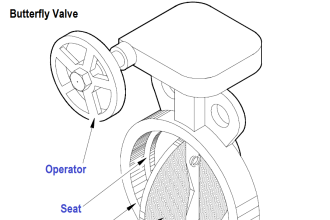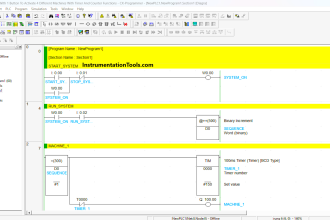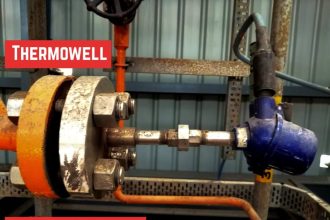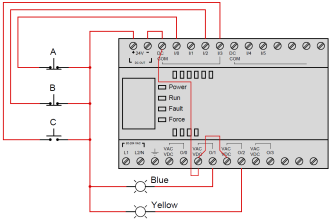Check this article on Precision Instruments Interview Questions and Answers useful for your preparation. Get ready to crack the interview.
Precision Instruments Questions

What Is Nominal Size?
The Nominal size of a dimension is the size by which it is referred to as a matter of convenience.
Define Actual Size?
The Actual size of a dimension is its actual measured size.
What Do You Meant By Basic Size?
The Basic size of a dimension is the size in relation to which all limits of variation are made.
Define Fits?
The relation between two mating parts with reference to ease the assembly is called Fit.
What Is Limits?
Two extreme permissible sizes of a dimension are called Limits. The high limit for a dimension is the highest permissible size and the low limit is the lowest permissible size.
Define Tolerance?
The difference between the high and low limit of a size is called tolerance.
Define Allowance?
The intentional difference in the sizes of mating parts is called the Allowance.
What Is The Difference Unilateral And Bilateral System Of Tolerance? . Discuss The Least Count Of A Vernier Caliper?
A smallest measurement that can be obtained on a vernier caliper is called the least count of a vernier caliper. Generally vernier calipers are available with 0.02mm least count in metric system and 0.001” in inch system.
Find Out The Least Count Of A Vernier Caliper When Its Main Scale Graduation Is 49 Mm And The Vernier Scale Is Divided In To 50 Equal Parts?
Value of 1 main scale division = 1 mm
Value of 50 vernier scale divisions = 49 mm
Value of 1 vernier scale division = 49 x 50 mm or 0.98 mm
Least count = 1 M.S.D – 1 V.S.D = 1 – 0.98 = 0.02 mm
What Are The Reasons Behind False Reading On Vernier Caliper While Taking Measurements?
Vernier caliper may have defects.
Tidy job piece or measuring faces of vernier caliper.
Wrong way of holding the vernier caliper and unawareness of reading measurements.
Taking measurements when the job on motion.
Pressure variation of holding fingers.
Temperature difference between the job and the vernier caliper.
What Are The Main Merits Of A Vernier Caliper Over A Micrometer?x
- Vernier caliper may have defects.
- Tidy job piece or measuring faces of vernier caliper.
- Wrong way of holding the vernier caliper and unawareness of reading measurements.
- Taking measurements when the job on motion.
- Pressure variation of holding fingers.
- Temperature difference between the job and the vernier caliper.
Name The Various Parts Of A Vernier Caliper?
- Main scale or beam
- Fixed jaw
- Movable jaw
- Vernier scale
- Fine adjusting unit
- Locking screws
- Fine adjusting screw
- Inner measuring nibs
- Depth gauge.
What Are The Purposes Of Vernier Height Gauge?
For making parallel lines on the work piece to the accuracy of 0.02 mm in metric system and 0.001” in inch system.
For comparing heights of finished work piece.
What Is The Use Of Of Vernier Bevel Protractor?
Vernier Bevel Protractor is used to measure and check the angles of a job to the accuracy of 5’ (5 minutes).
What Is The Function Of A Vernier Depth Gauge?
A vernier depth gauge is used to measure and check the depth of blind holes, steps etc. to the accuracy of 0.02 mm 0.001”.
Why Micrometer Carries A Ratchet Stop?
Ratchet stop supports to measure accurate reading applying uniform pressure on the measuring faces irrespective of operator’s skill and strength.
What Are The Reasons Behind False Reading On Micrometer While Taking Measurements?
- There is zero error in Micrometer.
- Dirty work piece or measuring faces of micrometer.
- Unengaged Ratchet stop.
- Taking measurement when the job on motion.
- Wrong way of holding Micrometer.
- Temperature variation between the work piece and the Micro meter.
Define Zero Reading Of A Micrometer?
Zero reading of a micrometer is the initial reading which may vary according to the size of the micrometer.
- Zero reading of 0-25 mm micrometer is 0
- Zero reading of 25-30 mm micrometer is 25 mm
- Zero reading of 50-75 mm micrometer is 50 mm etc
Specify The Term Backlash Of A Micrometer?
Backlash is the lack of motion or lost motion of the spindle when the rotation of the thimble is changed the direction.
Mention The Features Of A Universal Bevel Protractor?
- Minimum reading is 5 minutes.
- Main scale and Vernier scale are on the same plane to eliminate the reading parallax.
- Fine adjustment of the blade insures the precision measuring and laying out of angle.
- Main parts are of hardened stainless steel to prevent rust.
- Combined with an attachment or Height gauge, a wide range of measurements is available.
What Is A Gear Tooth Vernier Caliper?
Gear tooth Vernier caliper id made with vertical and horizontal scales. So movement can be taken at a time with these two scales. It is used to measure the chordal addendum and chordal thickness of a gear tooth within the accuracy of 0.02 mm or 0.001”.
State The Uses Of A Dial Test Indicator?
- To check the parallelism of machined or ground surfaces.
- To check the true rotation of round jobs.
- To compare the dimensions of finished components.
What Are The Functions Of A Comparator?
- The components can be checked quickly during mass production.
- For the inspection of newly procured gauges.
- In selective assembly of parts where parts are graded in groups depending up on their tolerances.
- As laboratory standard where working and inspection gauges set and correlated.
- Attached with some machines which can be used as working gauge to prevent work spoilage and to maintain required tolerances at all stages of manufacturing.
Explain About An Optical Flat?
It is a circular piece of glass or fused quartz with its two plane faces flat and parallel and the surfaces are finished to an optical degree of flatness, Optical flat ray in size between 25 and 300 mm diameter. Quartz flats have high of wearing quality than the optical glasses and have minimum expansion of heat.
When an optical flat is placed over a flat surface being measured, a series of rainbow bands are observed which are known as interference bands. Better results can be obtained under colored light because bands are more clearly visible. The optical flats are used for testing the flat surfaces of engineering instruments.
What Is A Gauge?
A Gauge is a checking instrument which is commonly used in tool room and machine shop for checking the finished components.
Point On The Advantages Of Gauges?
- It increases the production.
- It saves the time.
- It makes the parts interchangeable.
- It reduces the supervision charges.
- It minimizes the production cost.
What Is The Difference Between Workshop Gauges And Inspection Gauges?
Work shop Gauges are generally used in workshops to inspect the job within an accuracy of 0.025 mm. Semi skilled workers are the beneficiaries.
Inspection Gauges commonly used to check up more accurate components and also inspect the workshop gauges within an accuracy of 0.0025 mm.
Discuss The Function Of A Feeler Gauge?
A feeler gauge is used to measure the gap between two mating parts.
Mention The Use Of ‘go’ And ‘not Go’ Plug Gauges?
These gauges are used to check the hole dimensions in limit. The high limit end of this gauge should not go in to the hole which is called NOT GO and the low limit end should go in to the hole which is called GO end.
What Are The Benefits Of A Gauge Block?
To check the accuracy of precision instruments.
Gauge blocks are also used along with sine bar for setting dimensions to the required heights to read the angle.
Clarify The Term ‘wringing Of Slips’?
The method of twisting the gauge blocks while setting it to required height is known as Wringing of slips.
What Are The Precautions To Be Taken While Using Slip Gauges?
- The slip gauges must be kept separated, cleaned, and dust free when not in use.
- Do not keep the slip gauges in a magnetic field, keep out from temperature fluctuations and should not be exposed in dampness.
- Avoid the contact between the slip gauges for a long time.
- Functional surfaces must be secured from scratches and hand or finger contacts.
- Use only linen cloth or chamois leather for cleaning purpose.
What Is Sine Bar, And Why It Is Called As Sine Bar?
A sine bar consists of an accurately finished steel bar having two rollers of equal diameter which are placed at the fixed distance. It is used for setting and measuring angles together with slip gauges, surface plate and dial test indicator.
The name Sine bar, because it works as a hypotenuse in a right angle triangle.
Define The Specification Of A Sine Bar?
A sine bar is specified by the distance between the center of two rollers. Sine bars are generally available in 100 mm to 250 mm sizes.
What Is A Template?
A Template is a model of an object which is designed according to required profile in least expense. It is generally made from mild steel sheet.
What Are The Intentions Of Using A Template?
- To make identical parts.
- To check the shape of manufactured parts.
What Are The Favors Of A Template?
- Easiest method of marking identical parts.
- If the design of template is not suitable, it can be repaired or replaced easily.
- It reduces the production cost.
What Do You Meant By Unilateral And Bilateral System Of Tolerance?
Unilateral Tolerance : If the variation from basic size is in one direction, system of tolerance is called unilateral.
Bilateral Tolerance : If the variation from basis size is in both direction, system of tolerance called Bilateral Tolerance.
Define Tolerance Zone?
This is the graphical representation of the region between upper and lower limit.
What Do You Meant By Fundamental Deviation?
It is the deviation which is conveniently chosen to define the position of the tolerance zone in relation to zero line.
Define Zero Line?
Ii is the graphical representation of the basic size. The deviations are measured from this line.
What Is The Actual Deviation?
It is algebraic difference between an actual size and corresponding basic size.
What Is The Necessity Of Giving Tolerance?
- It saves the labour charges.
- It saves the material from wastage.
- It saves the time.
- Production can be increased.
- It helps to reduce the manufacturing cost of the parts.
Describe The Shaft Basis And Hole Basis System Of Limits ?
Shaft basis system – In this system, the size of shaft is and various classes of fits can be obtained by giving tolerance on hole
Hole basis system – In this system, the size of hole is constant and various classes of fits can be obtained by giving tolerance on shafts
Why The Hole Basis System Is More Popular Between The Manufacturers?
Hole basis system is more popular, because it has many advantages over the Shaft basis system, such as,
It is easier to vary the size of the shaft than that of hole
More adaptable to produce hole of standard size than that of shaft, because of majority of hole in engineering works is finished to its nominal size by using drills and reamers of standard size.
How Many Classifications Are There In Indian Standard System For Fits?
Clearance Fit – It is a kind of fit which always provides clearance with positive allowances. The tolerance region of the hole is above than that of the shaft.
Transition Fit – This type of fit always has close providing by either a clearance or an interference. The tolerance region of the hole and shaft overlaps.
Interference Fit – It is a fit which always provides interference with negative allowances. The tolerance region of the hole is below the size than that of the shaft.
What Is The Difference Between The Free Fit And The Snug Fit?
The Free and the Snug are the fits come under the clearance fit but Snug Fit has close contact than that of Free Fit.
Define The Term ‘interchangeability’?
Interchangeability is that the manufacturing of similar components under mass production can be assembled and replaced without any further treatment as well as without affecting the functioning of the component.
What Is The Significance Of Interchangeability In Mass Production?
- It saves time and labor charges.
- It gives more employment due to mass production.
- Improves the efficiency of workers.
- Easy to assemble due to International trade mark.
- Minimize overall production cost.
Explain Briefly On Is: 919
Scope. This standard makes recommendations relating to limits of size of parts or components and to fits constituted by their assembly.
Symbols. Following symbols are used in this standard,
Upper deviation of a hole ES (Ecart Superieur)
Lower deviation of a hole EI (Ecart Inferieur)
Upper deviation of a shaft es
Lower deviation of a shaft ei
Fits. When the parts are to be assembled, the relation resulting from the differences between the sizes before assembly is known as Fit. Depending up on the limits of the hole or shaft, the fit may be a clearance, a transition or an interference.
Hole Basis System. In this standard, the different clearances and interference are obtained in associating various shafts with a single hole, whose upper deviation is zero and the symbol is H.
Shaft Basis System. In this, the different interference and clearances are obtained in associating various shafts with a single shaft, whose upper deviation is zero and the symbol is h.
Indication of Fit. A fit is indicated by the basic size common to both components followed by symbols corresponding to each component, the hole being quoted first.
Eg : 40 H7/g 6 or 40 H 7 – g 6
Identify The Fit Indicated By The Following,(a) H8/g7 (b) H7/p6
H8/g7 indicates sliding fit or close running fit which includes the group of clearance fit.
H7/p6 indicates light press fit which includes the group of interference fit.
What Is Mass Production And Point Out Its Advantages?
- Production of a unit, component or part in large scale or number is called mass production.
- Time consumption of manufacturing.
- Reducing the manufacturing cost.
- Interchangeability of products.
Discuss The Terms Selective Assembly And Non-selective Assembly?
Selective Assembly – This assembly is slow and expensive, also the maintenance is difficult to manage since the spares are not easily available. For example special threaded nut and bolt in which each nut fits only one bolt.
Non-Selective Assembly – It is quiet rapid and less expensive, maintenance is very easy since the spares are widely available. For example any nut fits on any bolt of same size and the type of thread.
What Is Lapping?
Lapping is an operation of finishing the flat and the cylindrical surfaces to a fine degree of accuracy by means of a lap and lapping compound. It may be done by hand or by machine.
What Is The Necessity Of Lapping?
- To finish the job up to the last digit of accuracy.
- To get good surface finish.
- To control the size.
- To get desired fit.
What Is Honing?
Honing is an operation of finishing cylindrical surfaces to a fine degree of accuracy by means of abrasive sticks.
Write The Three Main Coating Methods Done On Metal To Prevent Corrosion?
- Temporary coating, like grease, oil or varnish etc.
- Semi-permanent coating, like painting, coloring of brass, bluing of steel, black finish of steel, tinning, galvanizing etc.
- Permanent coating, like chromium plating, nickel plating, silver plating etc.
Differentiate Between Plug Gauge And Snap Gauge?
Plug gauge. It is used for checking the diameter of the hole. It may be found in single ended, double end or progressive type.
Snap gauge. It is used for checking the external dimension of the parts. It may be found in solid, adjustable or double ended type.
Find Out The Height Of The Slip Gauges If The Sine Angle Is 20 Degree Using A 100 Mm Sine Bar?
Value of sine 20 degree = 0.3420 (from sine table)
Hypotenuse is the length of sine bar i.e 100 mm.
Height of slip gauges = Hypotenuse * sine 20 = 100* o,3420 mm =34.20 mm
Find The Least Count Of Metric Vernier Outside Micrometer?
10 vernier divisions = 9 thimble divisions
1 thimble division = 0.01 mm
10 vernier divisions =0.09 mm
and 1 vernier division =0.09/ 10 = 0.009 mm
so the difference is the value of one thimble division – value of 1 vernier division = 0.01-0.009 mm = 0.001 mm
How To Find Out The Least Count Of A Universal Bevel Protractor?
1 degree= 60 minutes
1 minute= 60 seconds
12 division on vernier scale = 23 degree
one division on vernier scale = 23/12 = 23*60/ 12= 115 minutes
1 vernier scale division is less than 2 degree
so, value of 2 degree on dial = 2*60 = 120
Value of one vernier scale division = 115
Least count = 120-115= 5 minutes
How To Read The Vernier Caliper For 15.80 Mm Reading?
15 .00 mm – 15 main scale divisions (15*1 mm)
0.50 mm – 1 subdivision (1* 0.5 mm)
0.30 mm – 15 vernier divisions (15* 0.02 mm)
So the total reading is 15.80 mm
How To Read An Outside Micrometer For 29.71 Mm Reading?
25 .00 mm – Zero reading of 25-50 micrometer
4.00 mm – 4 main divisions (4 * 1 mm)
0.50 mm – 1 subdivision (1 * 0.5 mm)
0,21 mm – 21 thimble divisions (21* 0.01 mm)
So the total reading is 29.71 mm
















